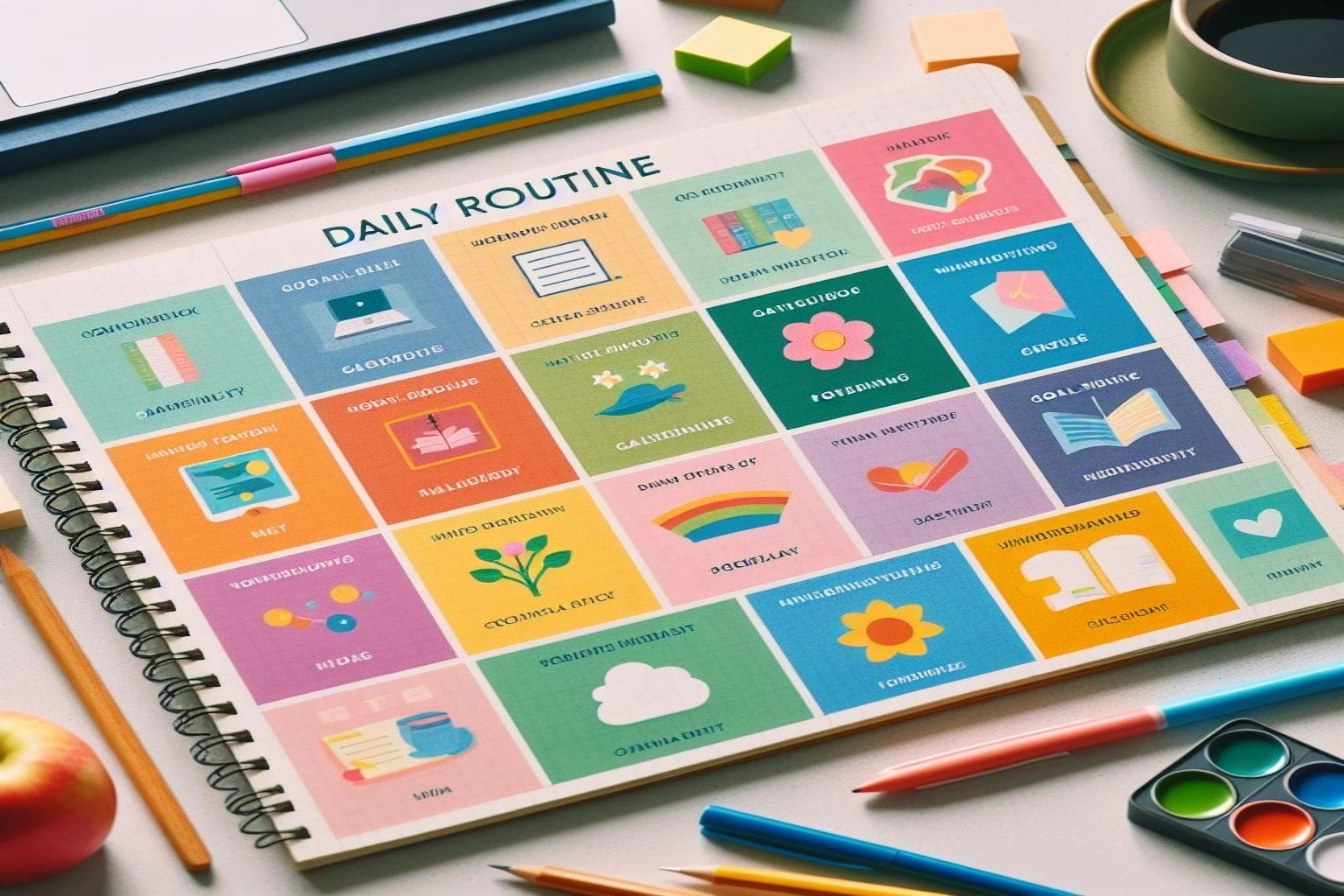
Life is unpredictable. One day you wake up on autopilot, going through the motions without much sense of purpose or progress. Days, months and even years can slip by this way. Suddenly you find yourself looking back wondering “Where did the time go?” and “Why am I no closer to my biggest dreams and goals?”
This is what happened to Matthew Dicks after several brushes with death radically shifted his perspective.
Finding Purpose After Near-Death Experiences
In his early 20s, Matthew Dicks had 3 separate near-death experiences within a few years. First, when he was 22 years old, he was held at gunpoint and genuinely thought he was going to die. His only regret in that moment was how little he had accomplished in life so far.
Next, he got into a severe car accident where his vehicle rolled over 5 times at high speed. He broke his sternum and could barely move for months. Then shortly after, he nearly drowned in the ocean when a riptide pulled him out and he couldn’t swim back to shore. Each time, he emerged physically and emotionally scarred but also with a renewed sense of purpose.
Brushing with death made Matthew realize how fragile life is. He didn’t want to waste whatever time he had left. He rethought what really mattered and decided to start living more intentionally. Up to that point, Matthew had been broke and directionless, bouncing between odd jobs and living in his car. The wake-up calls spurred him into action.
He started taking steps each day to turn his life around. Over time, Matthew went from hitting rock bottom to becoming a highly accomplished author, storyteller and journalist. He found both meaning and success.
Sharing His Wisdom in “Someday Is Today”
After rebuilding his life, Matthew Dicks wrote the book “Someday Is Today” to share the mindset shifts and productivity tactics that helped him achieve so much after starting from nothing.
The book contains powerful, actionable advice for getting unstuck and making consistent progress towards your biggest life goals and dreams. He provides specific techniques for finding direction, staying motivated and making the most of your precious time.
I recently discovered Matthew’s work and “Someday Is Today” really resonated with me. The practical wisdom in this book can help anyone overcome obstacles and take their life to the next level.
Here are 7 of my favorite tips from “Someday Is Today” that you can start applying to your life immediately:
1. Practice “Parking Lot Productivity”
When working on big goals and passion projects, it’s tempting to wait for large blocks of time and perfect circumstances to get started. You might think you need a quiet café, a long plane ride or an entire free weekend to make any real progress.
But as Matthew discovered, real productivity doesn’t look like what you might imagine. Life is often messy and chaotic. If you wait for ideal conditions, you’ll be waiting forever.
That’s why he coined the term “parking lot productivity.” This refers to embracing small windows of time wherever you can find them – even if far from an inspiring work environment.
For example, Matthew drafted chunks of his book while sitting in parking lots waiting for appointments. He also talks about soldiers in the trenches of WWI who wrote by candlelight during moments of calm. The point is not to rely on perfect circumstances that may never come. Instead, be ready to capture any little window of time that pops up:
– The 10 minutes waiting in line for your coffee.
– Your lunch break at work.
– The time spent commuting on the bus.
– Early morning moments before the house is awake.
Get creative and use small pockets of time other people waste on their phones. Write a paragraph while waiting for a friend. Brainstorm ideas while walking the dog. Carry a notebook to jot down inspirations. Then when you do get a big block of free time, you’ll be primed to make huge progress because of those small steps added up.
2. Adopt a “Minutes Mindset”
Similar to parking lot productivity, Matthew recommends shifting your mindset from hours to minutes. Most of us schedule our days and tasks in hour blocks on our calendars. Everything is planned out from 9am-12pm or 2pm-4pm.
But according to Matthew, thinking in hours wastes a massive amount of potential time. There are small windows hidden within those big blocks that could be used productively. Next time you have a 30 minute meeting scheduled, don’t just mindlessly browse your phone beforehand. Arrive 5 minutes early and knock out a few tasks in your inbox.
Look for those 5, 10 or 15 minute gaps throughout your day that could be put to good use:
– The time waiting for your computer to boot up.
– Your commute once you’re finally sitting down.
– Scribble down ideas while the microwave runs.
Treat minutes as precious, especially when working on creative projects or big goals. Use a timer to stay focused. The minutes mindset forces you to maximize every single minute.
A minute may not seem like much time, but small progress consistently made leads to huge results over the course of months and years. The minutes mindset compounds.
3. Use the “Lily Pad Method”
Often the projects we’re most passionate about also seem the most overwhelming. When the finish line is far off in the distance, it’s easy to get demotivated. Trying to accomplish everything sequentially can also slow you down. Sometimes you need to jump around to break through creative ruts.
This is where Matthew’s “lily pad method” comes in handy. The core idea is to break down a big project into smaller actionable tasks – but not worry about doing them in perfect order.
Think of these bite-sized tasks as lily pads floating on the surface of a pond. You have the freedom to leapfrog between them instead of proceeding linearly.
For example, say your horizon goal is to write a book. The lily pads might include:
– Writing chapter outlines
– Drafting specific chapters
– Researching facts
– Creating characters
– Collecting stories for examples
– Hiring an editor
– Contacting cover designers
There’s no need to methodically check off each lily pad. Let your energy and inspiration guide you. Skip ahead to draft chapter 15 if that one’s clearest in your mind today. Or bounce to a different lily pad when you hit a creative wall. Momentum is most important.
Matthew used this technique to stay agile while writing his book. He jumped between editing, new writing, revisions, research, interviews and more. Progress compounds faster when you work this way.
4. Set “Horizon Goals”
You’ve probably heard of SMART goals before – specific, measurable, achievable, relevant and time-bound goals. They provide helpful structure and metrics.
But Matthew argues that holding goals to SMART criteria can sometimes set you up for disappointment. Things often don’t go according to plan. Timelines shift, metrics change, roadblocks pop up. Instead, he recommends setting what he calls “horizon goals.” The horizon provides direction without being too specific or restrictive.
For example, set a broad horizon goal of “starting my own business.” This goal is future focused but leaves room for flexibility on how it manifests. Maybe you’ll build an ecommerce site, offer consulting services, open up a local storefront or start a SaaS company. The horizon goal keeps you moving forward through ups and downs.
Your ship will still face storms and need to change course. But chasing the business horizon provides needed guidance when challenges arise. Horizon goals relieve unnecessary pressure while still providing a target to aim at. They offer just enough shape without overly restricting possibilities.
5. Embrace the “Piano Precedent”
Despite our best laid plans, life often has other ideas. Unexpected job loss, injuries, pandemics, accidents, heartbreak and more can disrupt even the most methodical 5-year plan. Matthew calls this the “piano precedent” – as if the universe drops a piano on our perfectly crafted strategies to remind us we’re not fully in control.
The more rigid your plans and timelines, the more disappointment you’ll feel when the piano inevitably falls. Inflexible systems snap under pressure. The healthiest approach is to make plans but hold them loosely. Have a vision for where you want to go but expect milestones and metrics to shift.
Be like bamboo – flexible, resilient and ready to bend without breaking. Course correct when challenges arise rather than expecting a straight path. Focus more on daily progress than hard deadlines. You’ll get there eventually as long as you keep moving forward. Don’t be discouraged by short term setbacks.
Building in wiggle room allows plans and unexpected developments to weave together seamlessly. You’ll handle life’s uncertainties with grace.
6. Consult Your “Future Self”
When feeling stuck or conflicted about a big decision, Matthew recommends consulting your wiser future self. Imagine your 85 year old self full of life experience and perspective. If you could, what advice would they give you right now? What do they wish they knew back then?
This mental exercise provides surprising clarity. Short term pressures fade away when you consult your elder self.
For example, say you’re torn between finishing an assignment or going out with friends. In the moment, the deadline feels urgent so you’re tempted to cancel. But chances are your elderly self would encourage you to embrace relationships over one small deadline. They know how fleeting youth and friendships are.
Next time you’re wavering, pause and channel your future wisdom before acting. Long term fulfillment often outweighs short term urgency.
7. Focus on “Soft Goals”
With all the focus on career advancement and business productivity these days, it’s easy to lose sight of simple joys that make life rich. That’s why Matthew urges aggressively pursuing what he calls “soft goals” outside of work and achievement.
Soft goals include:
– Reconnecting with childhood friends
– Visiting all national parks
– Learning to play guitar
– Reading 50 classic novels
– Volunteering locally
They often get pushed off for later. But as Matthew learned, later may never come. Life is short and unpredictable. Be ruthless about productivity and efficiency in your work life to maximize time for relationships, hobbies, passions and giving back. Soft goals seem small but end up being the memories that stick with you until the end. They provide fulfillment that no title or award can.
Take Action Today
It’s easy to coast through life without much sense of direction or purpose. Days slip away on autopilot one into the next. But as Matthew Dicks learned firsthand, tomorrow is never guaranteed. Don’t wait for the perfect circumstances or future date to start living your dreams.
Use the practical advice in “Someday is Today” to spark momentum today. Identify your horizon goals, embrace your future wisdom, get productive in small windows of time and work towards passions that provide personal fulfillment.







